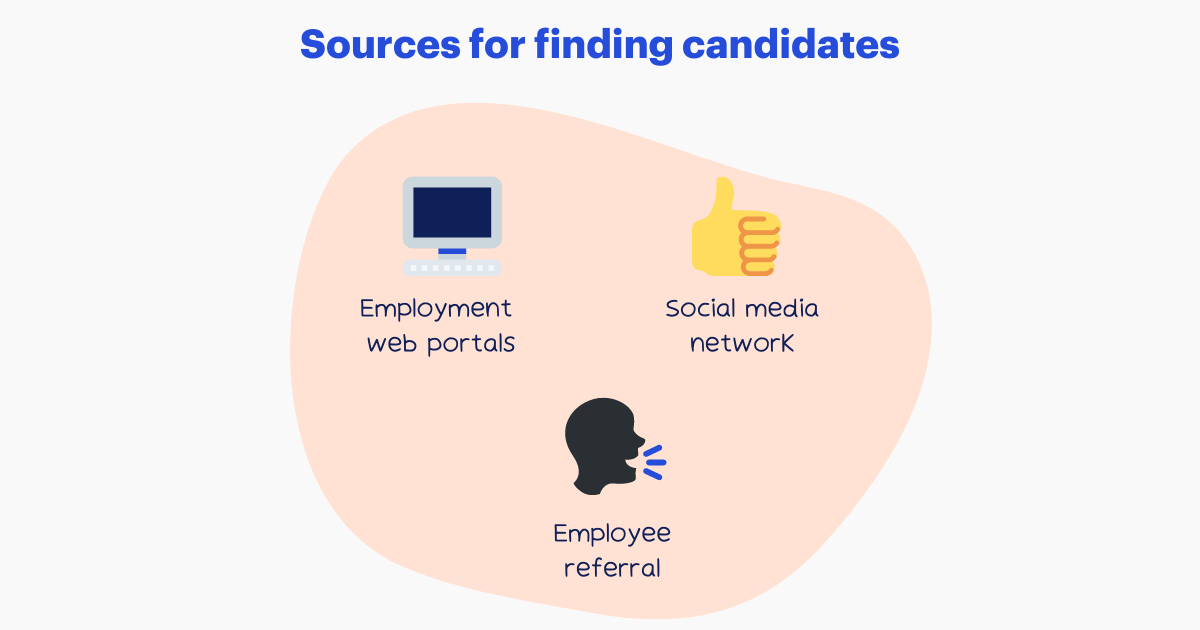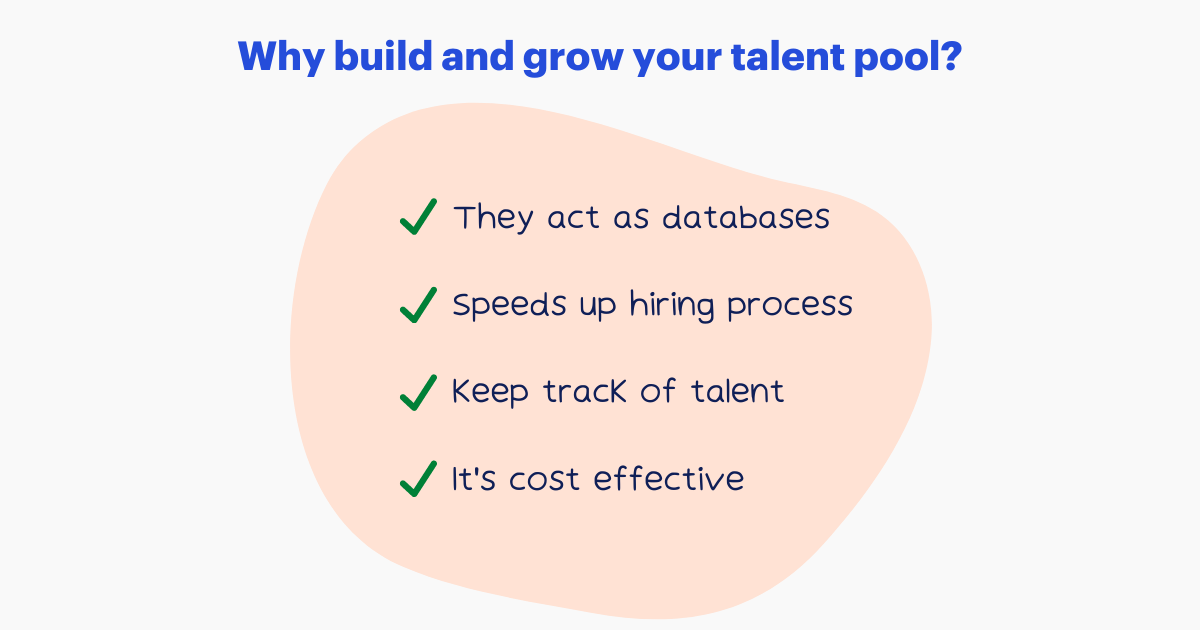Finding new employees can be a challenging task for new businesses and entrepreneurs, and even more so if the startup is still in its early stages.
At this point in the startup's development, many responsibilities have to be taken care of. And the lack of hiring experience, along with many other challenges early startups face while recruiting new employees, can become an obstacle to reaching new levels of growth and achieving bigger goals.
Understandably, businesses regularly apply several strategies during their hiring process in order to maximize their chances of finding the most appropriate candidate for their job opening.
In this article, let's look at five main strategies you too can apply when looking for new talent:
1: Build a strong Employer Brand
Your Employer Brand is the image you portray to both current and potential workers as an employer.
Putting your efforts into developing this brand is a good choice when looking for talent because it will help you not only attract candidates who share your vision and values but also retain them in the long run by being invested in your project and the future of your business.
With a good Employer Brand, you work towards reaching a point where you aren't looking for new employees to join you; they are looking to work for you, instead.
How can you do it?
One great way of building your employee brand is to first analyze your company culture. Directly speak to your employees and find out what they like about working for your startup company and what things they think should be changed.
You must take good care of your employee satisfaction, and to know in what state it is you can use tools such as anonymous surveys among your workers, keeping track of rating sites such as Glassdoor, and monitoring your own retention rate data.
Who uses this strategy?
Some great examples of successful companies with superb Employer Branding Strategies are Google, Patagonia, and Salesforce. So if you do decide to work on it, you're in elite company!

2: Be creative when sourcing candidates
Early-stage startups usually have to deal with a specific challenge that many of the businesses they’re competing with when recruiting talent don’t. It's having a limited budget.
However, there are several ways your startup can access competitive candidates without investing much. However, you have to think outside the box to gain an advantage in finding the right fit of employees.
How can you do it?
One easily accessible tool you can use without investing much would be employment web portals such as Indeed or Google for jobs, an extension of the standard Google search tool. There is also a very effective and individualized option of using your social media account and reach to its full potential. It's no secret that having a well-formed social media presence can help you gain more visibility and also spark the interest of future employees.
However, compared to other avenues, LinkedIn is the most perfect fit as a platform for professionals. The website has its advantages, having created an online community for networking and updates about your career and company. At the same time, it also allows you to post job offers and review your candidates' profiles—all in one place.
We also recommend you earnestly search and engage with passive candidates. Maybe these professionals are not looking for a job at that moment, but if any of the roles you are offering comes with a good set of conditions and benefits, they may consider joining your company.
And our last—but not least—recommendation: Encourage old-reliable employee referrals.
Statistics show that the most common way somebody discovers a new job is through referrals. It is also the number one source of quality hires for businesses.
Telling your employees to promote a new opening in your team may be the oldest trick in the book, yet it’s still one of the most effective. If your workforce is happy and engaged with your vision, implementing this strategy effectively can have immense value while being incredibly effective.
Employees who recommend your startup as a great place to work, present a positive image of you to their network. This in turn helps you reach talented individuals who may have been unreachable when using other strategies.
3: Reconsider what you can bring to the table
When you're an early-stage startup with limited funds, you may not be able to offer the best salaries in the market. And this can be a turn-off for many candidates, especially top professionals with much more experience. So, one crucial strategy you can adopt in such a condition is to promote the strengths that you can offer.
How can you do it?
A smart workaround to compensate for where you're lacking is to offer other benefits, especially those that are out of reach for bigger companies.
The new generation of millennial workers is looking for jobs that offer specific conditions, some that many of their predecessors did not bother much with. Flexible working hours, remote working, and even gym subscriptions are small elements that may compensate for the amount of money earned. You may not be able to offer top dollar, but improving how comfortable they are in their daily life can make a huge difference.
Research shows that the new generation of working professionals gives weightage to these new priorities while looking for a job, something older generations didn't consider relevant. For example, 80% of the new workforce prioritizes working with great people when choosing a new role in a company. Also, 79% consider flexible working a must when accepting a job offer.
Having an open communication channel with your current team will help you be aware of their needs and recommendations. This can further be useful to identify which benefits other candidates could be interested in when contemplating joining your startup.
4: Look for external help
As an entrepreneur, many of the responsibilities of your startup depend on you. Having to take the role of the company recruiter may be difficult for many reasons, including time, lack of expertise, and more.
Bigger companies invest part of their revenue in creating an HR department which is specialized in recruitment and has developed the company’s own hiring process. However, this is not an option for smaller companies because the available funds have to be invested in other more pressing matters.
What can you do in this situation?
When this is the case, the most practical solution is to hire external help, such as an RPO (Recruitment Process Outsourcing) Provider or a Recruitment Agency that can ease this process for you.
RPO Providers are external providers who take on a company's recruitment, partially or fully. They professionally analyze your company and its needs, and search the market to try to find an adequate candidate for the position.
The main difference between them and a traditional Recruitment Agency is that RPOs assume full responsibility for the recruitment duties as well as the results that come out of it, even investing in their own technologies and reporting tools for this.
To put it simply, traditional recruitment agencies work as an external source that fully supports their clients, while RPO providers work more as an extension of the same company.

5: Build and grow your Talent Pool
Talent pools are one of the most helpful hiring tools a company can have when trying to achieve an effective yet affordable hiring strategy since you can work on it while using most of the previously mentioned strategies.
Why should you create a talent pool?
These pools work as databases where your startup can archive the information of all the candidates that were considered suitable to join your team at some point.
Working on building a resourceful talent pool can help you speed up the hiring process and keep track of talent that could be an excellent addition to your company.
This is also a cost-effective tool available for all startups, independently of their size, that will grow along with the business and be a constant resource you can rely on.
Who uses this strategy?
Some of the many successful companies that are known to rely on their talent pools when looking for new talent are, for example, Spotify, Mercedes, and Trivago.
In fact, hiring statistics show that businesses can grow their talent pool ten times by recruiting new talent through their current employees' social media networks.
This means that by making use of social media, you can develop a better employee referral system while exponentially growing your business’ talent pool.
It shows us how all of the strategies above are completely related and that while working on one of them, you may be simultaneously developing another.
We encourage you to start trying and testing all these different strategies to see which ones work better for the interests of your company while helping you optimize your hiring process and finding the most suitable members for your team.



